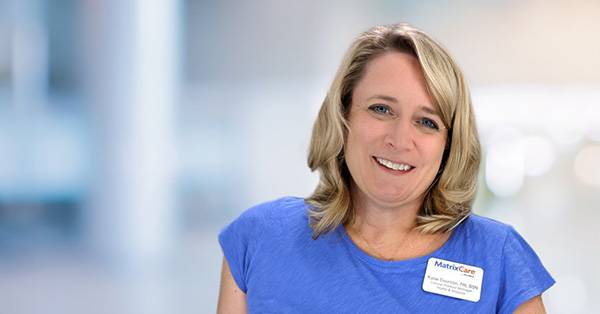- Solutions
- Solutions
- Home Health
- Hospice
- Life Plan Community
- Palliative Care
- Private Duty
- Senior Living
- Skilled Nursing
- Skilled Nursing
- Skilled Nursing Software
- Advanced Insights
- Customer relationship management
- Data and analytics
- Financial & operations management
- Marketing
- Nutrition management
- Referral management
- Regulatory compliance
- Retail management
- Resident engagement
- Revenue cycle management
- Skilled nursing interoperability
- Partners
- Blogs
- Resources
- About
- User Conference

The road to zero deficiency: How to achieve survey success
Achieving a deficiency-free survey is a significant accomplishment for home health and hospice agencies, but it holds different meanings depending on the agency’s specific licensures, certifications, and accreditations. Ultimately, it indicates that during an inspection, surveyors found no deficiencies in the agency’s care services, environment, or operational procedures. This achievement is a testament to the agency’s ability to meet or exceed the strict set of standards, but it is not an endpoint.
For an agency, a deficiency-free result isn’t a green light to relax. It’s a reflection of their commitment to ongoing excellence in patient care and operational integrity. This achievement places them in an elite category, distinguishing them as a top choice for both caregivers and patients.
The marketing advantage of a deficiency-free survey
A deficiency-free survey result is a marketing asset that can significantly enhance an agency’s reputation. This distinction is a powerful tool to attract top-tier talent, educate consumers, and expand their client base.
- Attracting top talent: Skilled professionals are more likely to join an agency where they can work at the top of their licensure, confident that the organization adheres to the highest standards of care.
- Patient trust: Patients and their families are reassured that they’ll receive superior care in a safe, regulated environment, making the agency a preferred choice in a competitive market.
- Caregiver confidence: Family caregivers gain peace of mind knowing that their loved ones are in the hands of experts who are committed to excellence and compliance with stringent regulations.
Achieving a deficiency-free survey
Achieving a deficiency-free survey doesn’t happen by chance or through simply maintaining good policies. It requires a coordinated effort at every level of the organization, with a constant focus on delivering patient-centered care. Here are four key considerations that agencies should prioritize on their path to achieving zero deficiency.
- Understand the regulations
Home health and hospice are two of the most heavily regulated sectors in healthcare, governed by a complex mix of state and federal rules, as well as accreditation standards. Agencies must navigate a broad array of requirements, which means leadership must ensure that the entire organization is fully educated and prepared.
But compliance cannot rest solely on the shoulders of the executive team; it must be embedded throughout the entire staff. Only with a deep understanding of these regulations can an agency achieve a positive survey outcome.
- Communicate the ‘why’ behind policies
Handing out policy manuals and procedures isn’t enough to foster a culture of compliance. Employees need to understand the rationale behind each policy. Explaining the ‘why’—why a procedure is followed, how it affects patient care, and the benefits of adherence—creates a sense of purpose and responsibility among staff.
When employees are engaged with the reasons behind regulations, they are more likely to integrate these practices into their daily routines, leading to better outcomes in compliance and patient care.
- Master the four survey components
Surveys can happen at any time, so preparation is key. A typical survey will include four primary areas
- A review of medical records
- An examination of agency operations
- A study of policies and procedures
- In-home visits to observe staff in action
Agencies must continuously prepare their teams for these surveys by providing ongoing education on each of these components. By making preparation an ongoing process, agencies reduce the risk of non-compliance and are always ready for that unexpected moment when surveyors arrive.
- Use data and resources to address deficiencies
Agencies must proactively learn from both internal and external data. This means understanding not only the deficiencies the agency may have faced in previous surveys but also the common pitfalls that other agencies experience.
By staying ahead of potential issues, agencies can address shortcomings before they become problems in the next survey. Corrective action plans should be developed and implemented to make sure the agency remains in compliance with all regulations.
Continuous education and improvement: The key to success
A deficiency-free survey is not the result of a one-time effort; it requires continuous education and a commitment to improvement. Agencies should invest in ongoing training to keep staff informed about the latest regulatory updates, industry best practices, and technological advancements.
Are you ready to achieve deficiency-free status?
The right technology partner can be a game-changer when it comes to preparing for and achieving a deficiency-free survey. MatrixCare offers solutions that help you streamline documentation, making it more timely, thorough, and accurate. This attention to detail can be the key to maintaining compliance and securing a zero-deficiency result during surveys.
Experience the benefits of being deficiency-free. Discover how the right tools can help ensure that your team is always prepared, compliant, and focused on delivering the best possible care.
Kathleen Courson
Kathleen Courson, RN, BSN (Katie) has been a registered nurse for 24 years with 18 of that spent in home health and hospice. She has worked in all realms of the industry, from field nurse to administration, including being involved in a start-up of an independent Medicare Certified Home Health agency in her rural community.
Katie is the Clinical Product Manager for the Home Health and Hospice Division of MatrixCare. She was previously on the MatrixCare Professional Services team as a Clinical Implementation Consultant. Prior to joining the MatrixCare Team, she was an active member of NAHC and the Pennsylvania Homecare Association, participating in the education committees for both organizations. She has held certifications in both OASIS and ICD-10 and provided remote coding/OASIS review services and instructions. Katie resides in rural NWPA with her husband of 24 year and they have 3 young adult daughters.
Related Posts


See MatrixCare in action
Start by having a call with one of our experts to see our platform in action.
MatrixCare offers industry-leading software solutions. Thousands of facility-based and home-based care organizations trust us to help them improve efficiency and provide exceptional care.
© 2025 MatrixCare is a registered trademark of MatrixCare. All rights reserved.






